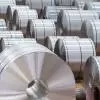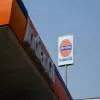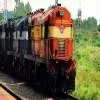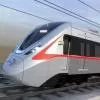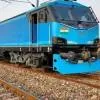- Home
- Technology
- Booming Fortunes
Booming Fortunes
Charu Bahri explores everything you wanted to know about boom pumps…their popularity, India-specific models, cost-efficiency, and how contractors can use them effectively. Plus, case studies and an overview of what’s on offer.
The unrolling of big-ticket construction projects of various kinds - metro, airport, power plants, hydroelectric projects, LNG tanks, refineries, ports, roads and bridges, not to mention high-rise buildings - ought to spell good news for vendors of all kinds of construction equipment, including boom pumps. But are Indian contractors actually making use of this technology for their products?
“The boom pump market in India is presently anywhere between 50 and 100 units a year,” says Anand Sundaresan, Managing Director, Schwing Stetter India Pvt Ltd. “Boom pumps are pricier than trailer pumps and the Indian market is very price-sensitive. That’s why boom pumps are only being used for infrastructure and SEZ projects. Mid-sized 36-m boom pumps mounted on a three-axle truck are most preferred by Indian customers.” For his part, Michael Schmid-Lindenmayer, Managing Director, Putzmeister, estimates the current size of the market at about 100 units with the most demand arising for boom placers in the 30-m class.
Shift in demand
“A shift in customer preferences is slowly happening, as contractors are choosing construction equipment that ensures projects are completed in the earliest possible time and in the most proficient manner,” adds Sundaresan. “Mobile, fuel and cost-efficient, long-lasting boom pumps demanding minimal maintenance process cycle and assuring faster and optimum output are the answer to these needs.”
Schmid-Lindenmayer also sees a growing demand for truck-mounted boom pumps in India led by contractors increasing emphasis on productivity, quality and safety. “The Indian market is slowly graduating from being a stationary pump market to using truck-mounted boom pumps,” he says. “Within truck-mounted boom pumps, the market is seeing clear differentiation between models suited to congested cities and applications where a 20 m reach is sufficient and larger truck pumps suitable for refineries, power stations, airports and other applications where a reach of over 40 m is required. Indian customers are coming up with new demands, such as for pumps with a 150 mm delivery pipeline for concrete with aggregates (bigger than 40 mm).”
The burgeoning market is encouraging newer players like Conmat to enter the market. “We’re bringing proven Italian technology to the Indian market,” says Kalpesh Soni, Senior Manager - Marketing, Conmat. “We believe the increasing number of high-rise constructions is spurring the demand for truck-mounted boom pumps with a length of 36 m.”
Wise choices
Contractors opting for truck-mounted boom pumps are increasingly choosing machines that make sound commercial sense. For instance, AV Dikshit, Technical Director, Aquarius Engineer Pvt Ltd, points out that a 20 m boom pump is mounted on a 16 tonne truck chassis while larger 32 m to 36 m pumps need a 25 tonne chassis according to current RTO laws. “As similar truck chassis are required for the 32 to 36 m models, contractors prefer 36 m boom pumps to 32 m versions,” he adds. “And as boom pumps of 42 m and above require chassis that are bigger than 25 tonne that must be imported (or a trailer), contractors are considering issues like maintaining and getting spare parts for an imported chassis.”
In this context, contractors are carefully evaluating whether they can reach the structure using more cost-effective, 36 m boom pumps. Dikshit suggests that if the vertical height of the structure is not the deciding criteria, that is, if horizontal reach is required, 36 m boom pumps could be used for the purpose by relocating the machine several times during the pour at different locations. It just takes a few minutes to do this and the practice is accepted by most site regulations.
The features of the boom pump, such as boom architecture, type of material used for making the boom section, layout of pipeline and pipeline supports used, hydraulic piping and supports are also under the scanner nowadays as contractors seek to reduce costs by selecting boom pumps with more economical parts. For instance, Dikshit points out that 200 mm diameter concrete pumping cylinders that are also used in popular stationary concrete pumps are more affordable as they’re much in demand. They also have a fewer number of strokes and less wear and tear for the rated output and better suction characteristics. Likewise, the pipeline supports should be such that they support the pipeline during the process of changing worn out pipes to reduce the time needed to do so.
India-specific R&D
The latest technology incorporated in boom pumps globally - such as free flow hydraulics, the Z or RZ-folding system of booms, S-valve, salve engine for lower fuel consumption, splitter gear box, cross outriggers, wear-resistant steel components, diagonal support system - is now available in India and being appreciated by clients for the value it adds to business. In addition, vendors are focusing on developing India-specific features to further enhance the value they deliver to Indian customers.
Speaking of features that matter to Indian clients, Schmid-Lindenmayer says, “We have specially developed machines equipped with the latest technology that can also withstand the toughest conditions at job sites. Our outstanding diagonal support system can compensate for the typically weak structure of Indian truck chassis. Separate fuel-efficient deck engines deliver the required power to drive the boom and pump concrete; these consume only half the fuel the truck engine would use for the same purpose. We’ve also modified the free flow hydraulics circuit to contain less oil so the customer saves money at every oil change. Also, as the length of the boom in India is limited by the weight limit of the truck, we’ve introduced large boom pumps (BSF4209 and BSS4614 in the 40m class) within the weight limits of 31 and 48 tonne, in keeping with the weight norms of Indian road regulations. Clients benefit by needing no special permission to run these machines.”
As boom pump technology is still only being used by leading Indian contractors, vendors like Schwing Stetter India (SSI) offer additional services such as training at its fully-fledged training centre at Chennai, and monitoring systems whereby the complete fleet is monitored from the production headquarters. SSI also helps customers choose the right equipment after considering the site requirement, particularly the available space and the height to which concrete needs to be pumped, and affordability.
With all this support, the Indian construction industry is sure to adopt boom pumps whole-heartedly. The payoff: meeting project deadlines and adhering to quality standards on a par with the world’s best. It’s boom time.
Usage tip
Normally, the folded height of the boom pump from ground level up to the topmost point ranges between 3.6 m and 4 m (for all boom pumps). So, do consider this to plan the movement of the equipment on site or in the city especially where the machinery needs to pass through overhead bridges, tunnels, etc. Similarly, for under the roof or inside the tunnel applications, the unfolding height of the boom pump should be considered. These usually range from 5 m to 18 m.
Dikshit suggests using this formula to calculate the practical working vertical height to use the boom pump efficiently:
Practical working vertical height = Boom pumps total vertical reach - (Last boom arm length + a 2 m allowance for the boom pump placement distance from the structure) For example, practical working vertical height of a boom pump of 20m vertical height and last arm length of 4.5 m is 13.5 m.
Case 1 (Showcases R&D for an Indian clients’ needs)
Model/make of equipment: BSF 32.09 with 150 mm pipeline
Vendor: Putzmeister
Who’s using it: GVK Projects
For which project: Alakhnanda Hydro Project, Uttaranchal
For what purpose: It is being used for construction at the hydro project site.
Key features: This model has been specially designed to withstand excessive wear and tear occurring due to the use of oversized aggregate (40 mm and above) as well as the use of stone dust as sand in the concrete mix.
Client’s comments: “We’re satisfied with this machine. We had earlier tried using a boom pump with a pipeline that was less than 150 mm in diameter. But oversized aggregates caused extensive wear and tear of the pipeline. Putzmeister’s
BSF 32.09 boom pump with 150 mm pipeline has solved this issue. As a result, we’re pumping continuously without any problems. Also, we’re now able to use stone dust as sand in the concrete mix, which was not possible earlier,” says AK Mishra, P&M In-charge, GVK Projects.
Case 2 Model/make of equipment: Putzmeister BSF 20.07 concrete pump mounted on a two-axle truck
Vendor: Putzmeister
Who’s using it: GMR Group
For which project: Four-laning of the NH 9 between Hyderabad & Vijayawada
For what purpose: It is being used for road construction.
Key features: The BSF 20.07’s small foot print makes it a city pump, well-suited for situations (narrow roads, closely placed buildings, and driving under bridges and under passes) where there’s no space at the job site for a truck -mounted concrete pump. It incorporates three short flexible arms in a Z-fold system, unfolding height of 5.5 m, fuel-efficient slave engine that lowers the total cost of ownership, a big mouth S-valve for easy suction of harsh concrete, and comes with optional hose extensions. Its total weight including truck is below 16.5 tonne.
Client’s comments: “We were earlier using stationary concrete pumps to construct over-bridges and under passes on NH-9. Setting up the pipeline and making arrangements took a lot of time and effort. In contrast, we’re now able to quickly pump concrete at many sites in a single day using Putzmeister’s boom pump BSF 20.07. Its compact size and maneuverability ensure that we’re able to take it to all locations. Besides, we’ve benefited from having Putzmeister’s trained service engineers train our operators at site and their service staff visits the site for the regular upkeep of machines,” says Krishna Mohan Dasika, AGM, GMR Group.
Case 3 Model/make of equipment: 36 m boom pump
Vendor: Aquarius Engineers Pvt Ltd
Who’s using it: SSE Nirman, Kolkata, West Bengal, and others
For which project: Residential buildings near MD Bungalow, Talpuri, Durg, Chattisgarh
For what purpose: It is being used for construction and has pumped approximately 25,000 cu m of concrete till date.
Key features: The boom height is 36 m mounted on a 25 tonne chassis. With an output of 65 cu m/hr, it’s a fuel economical boom pump.
Client’s comments: “We find the Aquarius boom pump 36.07 to be the most fuel economical machine. It is also easier and cheaper to maintain than its competitors,” says SK Panda, Project Manager, SSE Nirman.
Case 4 Model/make of equipment: Schwing S36 boom pump
Vendor: Schwing Stetter India Pvt Ltd
Who’s using it: Consolidated Construction Consortium Ltd.
For which project: Chennai Airport Project - Runway bridge across river Adayar
For what purpose: S36 boom pump was deployed at the bridge project across river Adayar on which the aircraft were expected to land and take off.
Key features: The boom pump was exclusively used for placing M60 Grade concrete with high cementitious content with a slump of 90-100 mm for concreting PT beams and bridge deck.
Client’s comments: “The pump performed well in handling sticky concrete with low slump. The after-sales support team of Schwing Stetter made the machine available 24x7 throughout the projects duration,” says VG Janarthanam, Director - Operations, Consolidated Construction Consortium Ltd.
- Construction
- Update
- Portal
- Magazine
- World
- February
- 2011
- India
- boom pumps
- technology
- Anand Sundaresan
- Schwing Stetter India Pvt Ltd
- infrastructure
- SEZ
- Michael Schmid-Lindenmayer
- Putzmeister
- Conmat
- Kalpesh Soni
- AV Dikshit
- Aquarius Engineer Pvt Ltd
- truck chassis
- RTO laws
- S-valve
- Chennai
- Schwing Stetter India
- AK Mishra
- GVK Projects
- Hyderabad
- Vijayawada
- Krishna Mohan Dasika
- Aquarius Engineers Pvt Ltd
- SSE Nirman
- SK Panda
- VG Janarthanam
- Consolidated Construction Consortium Ltd
Charu Bahri explores everything you wanted to know about boom pumps…their popularity, India-specific models, cost-efficiency, and how contractors can use them effectively. Plus, case studies and an overview of what’s on offer. The unrolling of big-ticket construction projects of various kinds - metro, airport, power plants, hydroelectric projects, LNG tanks, refineries, ports, roads and bridges, not to mention high-rise buildings - ought to spell good news for vendors of all kinds of construction equipment, including boom pumps. But are Indian contractors actually making use of this technology for their products? “The boom pump market in India is presently anywhere between 50 and 100 units a year,” says Anand Sundaresan, Managing Director, Schwing Stetter India Pvt Ltd. “Boom pumps are pricier than trailer pumps and the Indian market is very price-sensitive. That’s why boom pumps are only being used for infrastructure and SEZ projects. Mid-sized 36-m boom pumps mounted on a three-axle truck are most preferred by Indian customers.” For his part, Michael Schmid-Lindenmayer, Managing Director, Putzmeister, estimates the current size of the market at about 100 units with the most demand arising for boom placers in the 30-m class. Shift in demand “A shift in customer preferences is slowly happening, as contractors are choosing construction equipment that ensures projects are completed in the earliest possible time and in the most proficient manner,” adds Sundaresan. “Mobile, fuel and cost-efficient, long-lasting boom pumps demanding minimal maintenance process cycle and assuring faster and optimum output are the answer to these needs.” Schmid-Lindenmayer also sees a growing demand for truck-mounted boom pumps in India led by contractors increasing emphasis on productivity, quality and safety. “The Indian market is slowly graduating from being a stationary pump market to using truck-mounted boom pumps,” he says. “Within truck-mounted boom pumps, the market is seeing clear differentiation between models suited to congested cities and applications where a 20 m reach is sufficient and larger truck pumps suitable for refineries, power stations, airports and other applications where a reach of over 40 m is required. Indian customers are coming up with new demands, such as for pumps with a 150 mm delivery pipeline for concrete with aggregates (bigger than 40 mm).” The burgeoning market is encouraging newer players like Conmat to enter the market. “We’re bringing proven Italian technology to the Indian market,” says Kalpesh Soni, Senior Manager - Marketing, Conmat. “We believe the increasing number of high-rise constructions is spurring the demand for truck-mounted boom pumps with a length of 36 m.” Wise choices Contractors opting for truck-mounted boom pumps are increasingly choosing machines that make sound commercial sense. For instance, AV Dikshit, Technical Director, Aquarius Engineer Pvt Ltd, points out that a 20 m boom pump is mounted on a 16 tonne truck chassis while larger 32 m to 36 m pumps need a 25 tonne chassis according to current RTO laws. “As similar truck chassis are required for the 32 to 36 m models, contractors prefer 36 m boom pumps to 32 m versions,” he adds. “And as boom pumps of 42 m and above require chassis that are bigger than 25 tonne that must be imported (or a trailer), contractors are considering issues like maintaining and getting spare parts for an imported chassis.” In this context, contractors are carefully evaluating whether they can reach the structure using more cost-effective, 36 m boom pumps. Dikshit suggests that if the vertical height of the structure is not the deciding criteria, that is, if horizontal reach is required, 36 m boom pumps could be used for the purpose by relocating the machine several times during the pour at different locations. It just takes a few minutes to do this and the practice is accepted by most site regulations. The features of the boom pump, such as boom architecture, type of material used for making the boom section, layout of pipeline and pipeline supports used, hydraulic piping and supports are also under the scanner nowadays as contractors seek to reduce costs by selecting boom pumps with more economical parts. For instance, Dikshit points out that 200 mm diameter concrete pumping cylinders that are also used in popular stationary concrete pumps are more affordable as they’re much in demand. They also have a fewer number of strokes and less wear and tear for the rated output and better suction characteristics. Likewise, the pipeline supports should be such that they support the pipeline during the process of changing worn out pipes to reduce the time needed to do so. India-specific R&D The latest technology incorporated in boom pumps globally - such as free flow hydraulics, the Z or RZ-folding system of booms, S-valve, salve engine for lower fuel consumption, splitter gear box, cross outriggers, wear-resistant steel components, diagonal support system - is now available in India and being appreciated by clients for the value it adds to business. In addition, vendors are focusing on developing India-specific features to further enhance the value they deliver to Indian customers. Speaking of features that matter to Indian clients, Schmid-Lindenmayer says, “We have specially developed machines equipped with the latest technology that can also withstand the toughest conditions at job sites. Our outstanding diagonal support system can compensate for the typically weak structure of Indian truck chassis. Separate fuel-efficient deck engines deliver the required power to drive the boom and pump concrete; these consume only half the fuel the truck engine would use for the same purpose. We’ve also modified the free flow hydraulics circuit to contain less oil so the customer saves money at every oil change. Also, as the length of the boom in India is limited by the weight limit of the truck, we’ve introduced large boom pumps (BSF4209 and BSS4614 in the 40m class) within the weight limits of 31 and 48 tonne, in keeping with the weight norms of Indian road regulations. Clients benefit by needing no special permission to run these machines.” As boom pump technology is still only being used by leading Indian contractors, vendors like Schwing Stetter India (SSI) offer additional services such as training at its fully-fledged training centre at Chennai, and monitoring systems whereby the complete fleet is monitored from the production headquarters. SSI also helps customers choose the right equipment after considering the site requirement, particularly the available space and the height to which concrete needs to be pumped, and affordability. With all this support, the Indian construction industry is sure to adopt boom pumps whole-heartedly. The payoff: meeting project deadlines and adhering to quality standards on a par with the world’s best. It’s boom time. Usage tip Normally, the folded height of the boom pump from ground level up to the topmost point ranges between 3.6 m and 4 m (for all boom pumps). So, do consider this to plan the movement of the equipment on site or in the city especially where the machinery needs to pass through overhead bridges, tunnels, etc. Similarly, for under the roof or inside the tunnel applications, the unfolding height of the boom pump should be considered. These usually range from 5 m to 18 m. Dikshit suggests using this formula to calculate the practical working vertical height to use the boom pump efficiently: Practical working vertical height = Boom pumps total vertical reach - (Last boom arm length + a 2 m allowance for the boom pump placement distance from the structure) For example, practical working vertical height of a boom pump of 20m vertical height and last arm length of 4.5 m is 13.5 m. Case 1 (Showcases R&D for an Indian clients’ needs) Model/make of equipment: BSF 32.09 with 150 mm pipeline Vendor: Putzmeister Who’s using it: GVK Projects For which project: Alakhnanda Hydro Project, Uttaranchal For what purpose: It is being used for construction at the hydro project site. Key features: This model has been specially designed to withstand excessive wear and tear occurring due to the use of oversized aggregate (40 mm and above) as well as the use of stone dust as sand in the concrete mix. Client’s comments: “We’re satisfied with this machine. We had earlier tried using a boom pump with a pipeline that was less than 150 mm in diameter. But oversized aggregates caused extensive wear and tear of the pipeline. Putzmeister’s BSF 32.09 boom pump with 150 mm pipeline has solved this issue. As a result, we’re pumping continuously without any problems. Also, we’re now able to use stone dust as sand in the concrete mix, which was not possible earlier,” says AK Mishra, P&M In-charge, GVK Projects. Case 2 Model/make of equipment: Putzmeister BSF 20.07 concrete pump mounted on a two-axle truck Vendor: Putzmeister Who’s using it: GMR Group For which project: Four-laning of the NH 9 between Hyderabad & Vijayawada For what purpose: It is being used for road construction. Key features: The BSF 20.07’s small foot print makes it a city pump, well-suited for situations (narrow roads, closely placed buildings, and driving under bridges and under passes) where there’s no space at the job site for a truck -mounted concrete pump. It incorporates three short flexible arms in a Z-fold system, unfolding height of 5.5 m, fuel-efficient slave engine that lowers the total cost of ownership, a big mouth S-valve for easy suction of harsh concrete, and comes with optional hose extensions. Its total weight including truck is below 16.5 tonne. Client’s comments: “We were earlier using stationary concrete pumps to construct over-bridges and under passes on NH-9. Setting up the pipeline and making arrangements took a lot of time and effort. In contrast, we’re now able to quickly pump concrete at many sites in a single day using Putzmeister’s boom pump BSF 20.07. Its compact size and maneuverability ensure that we’re able to take it to all locations. Besides, we’ve benefited from having Putzmeister’s trained service engineers train our operators at site and their service staff visits the site for the regular upkeep of machines,” says Krishna Mohan Dasika, AGM, GMR Group. Case 3 Model/make of equipment: 36 m boom pump Vendor: Aquarius Engineers Pvt Ltd Who’s using it: SSE Nirman, Kolkata, West Bengal, and others For which project: Residential buildings near MD Bungalow, Talpuri, Durg, Chattisgarh For what purpose: It is being used for construction and has pumped approximately 25,000 cu m of concrete till date. Key features: The boom height is 36 m mounted on a 25 tonne chassis. With an output of 65 cu m/hr, it’s a fuel economical boom pump. Client’s comments: “We find the Aquarius boom pump 36.07 to be the most fuel economical machine. It is also easier and cheaper to maintain than its competitors,” says SK Panda, Project Manager, SSE Nirman. Case 4 Model/make of equipment: Schwing S36 boom pump Vendor: Schwing Stetter India Pvt Ltd Who’s using it: Consolidated Construction Consortium Ltd. For which project: Chennai Airport Project - Runway bridge across river Adayar For what purpose: S36 boom pump was deployed at the bridge project across river Adayar on which the aircraft were expected to land and take off. Key features: The boom pump was exclusively used for placing M60 Grade concrete with high cementitious content with a slump of 90-100 mm for concreting PT beams and bridge deck. Client’s comments: “The pump performed well in handling sticky concrete with low slump. The after-sales support team of Schwing Stetter made the machine available 24x7 throughout the projects duration,” says VG Janarthanam, Director - Operations, Consolidated Construction Consortium Ltd.












